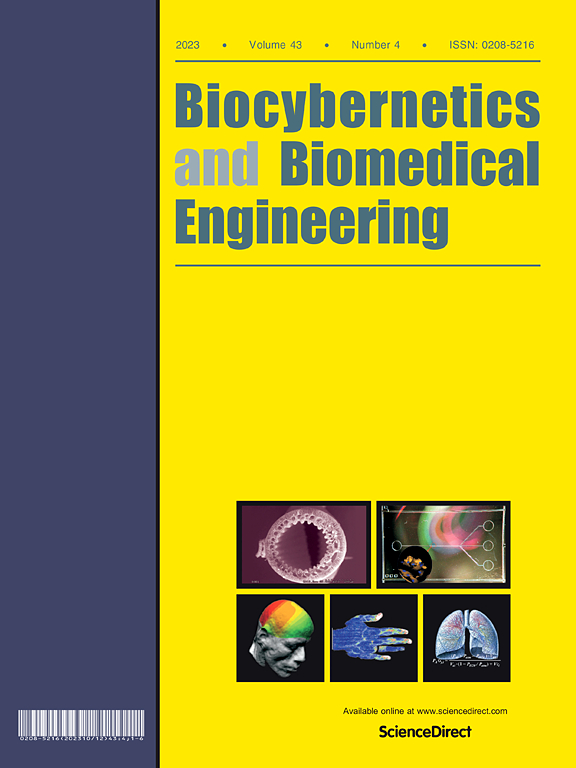细胞质和细胞核作为宫颈涂片中Bethesda细胞群分类的基础
IF 6.6
2区 医学
Q1 ENGINEERING, BIOMEDICAL
引用次数: 0
摘要
采用子宫颈细胞检验的方式进行人口普查,以减少子宫颈癌的发病率。然而,宫颈细胞检验的人工评估是一项劳动密集和细致的工作。这一挑战导致了各种计算机辅助细胞鉴定方法的发展,旨在提高评估质量和减少玻片分析所需的时间。病理学家的这些辅助工具应该坚持Bethesda细胞类型分类系统,促进与已建立的临床实践的整合。尽管取得了进展,但对于利用经典图像处理和深度学习技术的自动化和半自动方法来说,宫颈涂片中聚集细胞的自动分类仍然是一个重大挑战。本文提出了一种新的聚类分割方法,以提高Papanicolaou涂片数字图像中聚类细胞的分类。所提出的方法集成了可解释的人工智能和标记引导的分水岭分割,确保了整个管道的可解释性和多功能性,为涂片评估中的诊断专家提供支持。该方法在最近开发的Papanicolaou细胞学Bialystok数据集以及公开可用的CRIC数据集上进行了验证,证明了该方法在不同数据集上的泛化性。与未进行这种额外处理的结果相比,该方法增强的细胞分类管道的查全率和查准率的总体调和平均值(F1分数)提高了13.27个百分点。根据Bethesda系统对最关键的细胞类型(HSIL细胞类别)进行分类的改进更为显著,与对整个集群进行分类相比,提高了35.72个百分点。本文章由计算机程序翻译,如有差异,请以英文原文为准。
Cytoplasm and nuclei as a basis for Bethesda cell cluster classification in cervical smears
Population screening in the form of cervical smears was introduced to reduce cervical cancer morbidity. However, the manual evaluation of cervical smears is a labour-intensive and meticulous task. This challenge has led to the development of various computer-aided cell identification methods aimed at improving the quality of evaluations and reducing the time required for slide analysis. These supportive tools for pathologists should adhere to the Bethesda classification system for cell types, facilitating integration with established clinical practices. Despite advances, the automatic classification of clustered cells in cervical smears remains a significant challenge for both automated and semiautomated methods that utilize classical image processing and deep learning techniques.
This study introduces a novel method for fragmenting clusters to improve the classification of clustered cells in digital images of Papanicolaou smears. The proposed method integrates explainable AI and marker-guided watershed segmentation ensuring both interpretability and versatility of an overall pipeline for diagnostician support in smear evaluation. Validation of the method was performed on a recently developed Papanicolaou cytology Bialystok dataset, as well as the publicly available CRIC dataset, demonstrating the method’s generalizability across different datasets.
The cell classification pipeline, enhanced by the proposed declustering method, improved the overall harmonic mean of recall and precision (F1 score) by 13.27 percentage points compared with the results obtained without this additional processing. The improvement in classifying the most critical cell type according to the Bethesda system (HSIL cell class) was even more significant, with an increase of 35.72 percentage points compared with classifying the entire cluster.
求助全文
通过发布文献求助,成功后即可免费获取论文全文。
去求助
来源期刊

Biocybernetics and Biomedical Engineering
ENGINEERING, BIOMEDICAL-
CiteScore
16.50
自引率
6.20%
发文量
77
审稿时长
38 days
期刊介绍:
Biocybernetics and Biomedical Engineering is a quarterly journal, founded in 1981, devoted to publishing the results of original, innovative and creative research investigations in the field of Biocybernetics and biomedical engineering, which bridges mathematical, physical, chemical and engineering methods and technology to analyse physiological processes in living organisms as well as to develop methods, devices and systems used in biology and medicine, mainly in medical diagnosis, monitoring systems and therapy. The Journal''s mission is to advance scientific discovery into new or improved standards of care, and promotion a wide-ranging exchange between science and its application to humans.
 求助内容:
求助内容: 应助结果提醒方式:
应助结果提醒方式:


